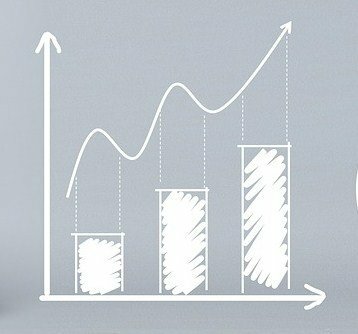The cash ratio also known as bank reserve ratio or reserve ratio. It is part of the list of tools used in the economic and monetary field, which allows the control of the liquidity monetary policy of the country, through the different Central Banks of the country. Those who set the reserve requirement percentage, therefore, is considered a ratio between the assets of the banks and the deposits made by their different clients.
In this article you will find:
Definition
The cash ratio It is the percentage of money that a financial institution must keep in its liquid reserves within the Central Bank of its country.
Advertisements
Economically speaking, it is used to specify the legal and mandatory cash coefficient, which is nothing more than the money to be maintained by a certain entity financial, without allowing its use for loans and investments, that is, the amount of money that must be kept in the box, understood by cash the account in the Central bank.
This amount is established by the monetary authorities of each country in question, as a minimum amount obligatory, in such a way that financial institutions can save a greater amount, but in no case may they be less.
Advertisements
This is an instrument commonly used as monetary policy, the lower the percentage of cash, the greater the amount of money in the market.

Advertisements
How is the cash ratio calculated?
The cash ratio is very easy to calculate, the following formula is applied:
C = R / D
Advertisements
C = Cash ratio
R = reserves
Advertisements
D = Deposits granted
The main function of the cash ratio, to achieve a money multiplier that is not high, for this way to guarantee the solvency of banks in the short term and that their funds do not multiply uncontrollably.
Example:
If in a certain country the cash ratio were 1%, it means that when someone takes € 5,000 to a bank, this bank must save € 50 in its reserves.
The cash ratio by country
The coefficient varies according to the country and its own currency, there are also countries such as Sweden, United Kingdom, New Zealand and Canada, which do not legally establish a cash ratio, however, their banks do establish a margin for their Bookings.
Each country has authorities that in the field of monetary policy impose the percentage of the minimum bank reserve requirement, to be met by all banks in the country.
In the European Union, the cash ratio is around 0 and 1% depending on the type of deposit. The European central bank has set minimum reserves, to be met by all financial institutions, these are calculated by means of the multiplication of the cash ratio of the different liabilities, which is why it is different for each type of Deposit.
In the United States, the cash ratio varies from 0 to 10%, for demand deposits the highest percentage and time deposits and others the minimum percentage.
When they occur variations in cash ratioThe main consequence of this is the change in the scope of supply, in monetary policy, thanks to the changes that the monetary rate produces in its multiplier.
In such a way that, if there are increases, banks must offer their clients a smaller number of credits, since that the said change merits that the banks execute measures to conserve their liquid reserves in all the branch offices.
To understand this more easily you must know what is the multiplier? It constitutes the process by which the bank multiplies its money, starting from a certain initial monetary amount. Which is possible since these entities are only obliged to keep a certain percentage of money in their reserves (a minimum amount).
It should be noted that the failure of the banks to comply with these reserve requirements can bring penalties, including the suspension of the entity's access to open market operations.
Disadvantage of saving resources in reserves
In general lines and from the business point of view, the banks believe it is inconvenient to keep this money, because they constitute immobilized resources that result in low profitability, so they consider that it brings better results to their profitability if that money is used to carry out investments.
Mostly such investments that are carried out, are made through deposits or the granting of credits to companies or individuals, who in turn make various investments with these amounts that can help the economic growth of the country.
However, it is counterproductive and some take it as drifting, because at the opposite extreme, using all the money violates the legal quantitative restrictions that are imposed to protect the resources of the clients, as it must be remembered that these resources are foreign and the banking entities are obliged to save these amounts as liquidity effective.


